
Shop Amazon - Create an Amazon Baby Registry
The World's Only Flyable P-40C Debuts

All photos courtesy of Tom Cleaver.
Text by Erik Shilling
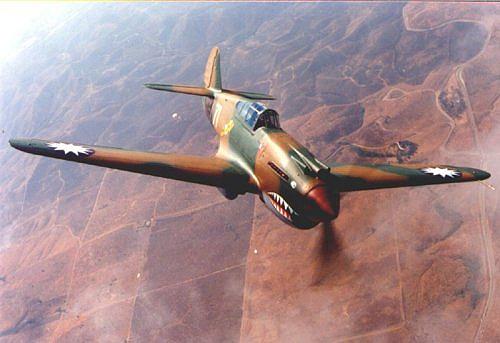
Last Friday, which was September 25, I had a most pleasant
surprise. I was invited down to the Planes of Fame Museum at Chino
California. I was told that Steve Hinton's restoration company had
finished restoring the P-40C for the Duxford Museum in England, and
would I like to see it?
When I arrived, there in front of the hangar sat a beautiful P-40C perfect in every detail. A flood of memories rushed through my mind reminding me of the wonderful Flying Tiger days of some 57 years ago. Memories that had faded almost into obscurity were now awakened. It was almost like yesterday, as I stared at the awesome beauty of the P-40, and in my minds eye I started reliving the experience of Burma and China.
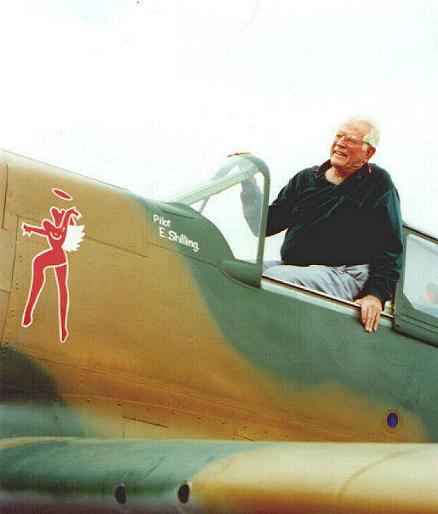
I recalled many sad times, some were of the men that had been
killed, but for the most part it was overshadowed by the wonderful
experiences my comrades and I had shared during those carefree days
of our youth. Standing there and looking at the Curtiss Hawk, I'm
convinced it was the prettiest fighter ever built.
Much to my surprise it was painted in the Flying Tiger's motif of the 3rd Pursuit Squadron. To top it off, its number was 71, with my name E. Shilling, painted below the cockpit. Initially No. 53 had been my aircraft and after I had converted No. 53 to the Photo ship, I was assigned to No. 71 which I shared with Ed Overend.
Sitting in the cockpit I found that with my eyes closed, I was still able to touch every control as though it were only yesterday since I had flown one.
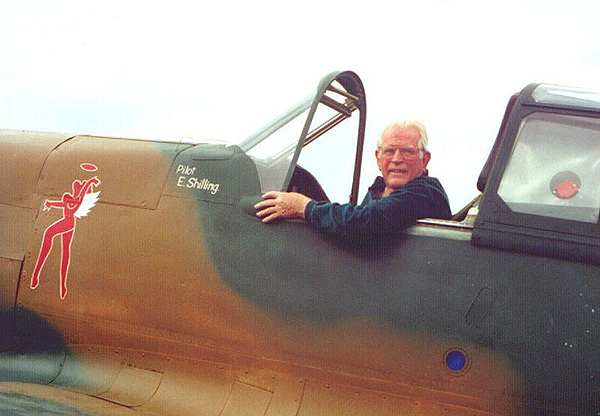
Of special interest was the history of this
airplane. It was P-40C initially assigned to the 20th Pursuit
Group, and not an export version of the Curtiss Hawk. Other than
early in the war, I'm not sure when it had been transferred to
Russia. It had also been shot down early in the war and in a rather
cold climate was fairly well preserved. It was purchased by someone
in England, and shipped to the United States to be restored by
Steve Hinton's restoration company here in Chino California.
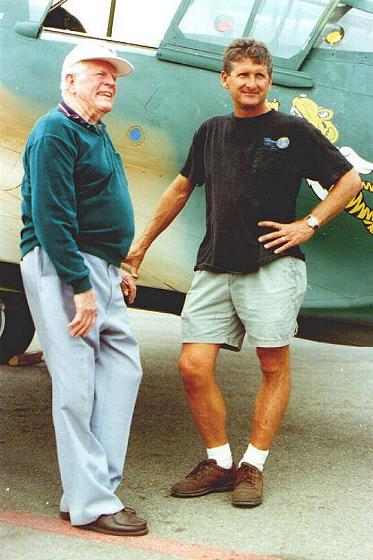
Because of those few who vehementally clung to the believe that the
model airplane the AVG's flew was a "C" model, I was especially interested
in checking the model. I carefully check the airplane over, and I
ran across the proof I needed which reinforced my contention that
we in the AVG, flew the B model.
In all fairness, this restored Russian P-40 is not a true "B" model, it was originally manufactured as a "C" model, but during the restoration it was rebuilt to the B configuration. Bomb shackels were removed, there are NO self sealing fuel tanks, and the fuel system for the belly tank has been eliminated, although the fuel selector placard still indicates a belly tank position.
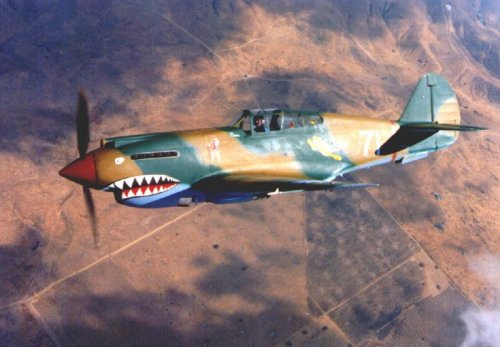
There is no external difference between the "B" and "C", and the
difference is quite subtle unless you have flown either of the two
models. Sitting in the cockpit there are three things that will
tell the pilot which model P-40 he is in. The fuel selector valve
for the P-40C has an additional position which allows the pilot to
select the belly tank. The model "B" does not have a belly tank,
therefore no belly tank position. Also, the "C" model had a belly tank
release to drop it before engaging in combat. Also, the "C" model
has a bomb release handle and the "B" does not. When doing the
pre-flight inspection, the pilot opens the baggage compartment to
check for loose articles and look for oil and fuel leaks before
getting into the cockpit. The external sealing material was easily
seen during this inspection. Therefore anyone who has flown either
model P-40 would know the difference, and I find it rather
irrational for anyone to argue with a pilot that he didn't know which model P-40 he was flying.
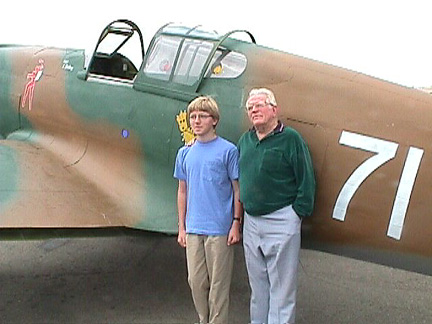
After many picture were taken with me in the cockpit, and looking
the plane over, a photo session was scheduled, using a B-25 as the
photo plane. I was given the honor of sitting in the bombardier
seat. Setting there when I saw the P-40 approaching I had an
unusual experience. For the first time I could see it through the
eyes of a Japanese as it bore down on them. It was not what I
expected. Looking at the P-40 with its snarling shark's teeth
coming in, I saw an awesome sight. It appeared as an intimidating,
frightening, deadly monster. I wondered if the Japanese had seen it
the way I now had viewed it. I had flown in formation with the P-
40 for many hours, but never did I think of it in this light as I
did riding in a bomber over California.
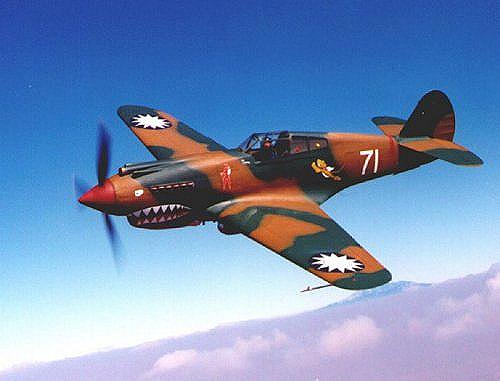
This brings me to a related story about a B-25 in China. Nearing
the end of our contract, one of our AVG pilots shot down a B-25. In
a way it was not entirely his fault, and being a Navy pilot, he had
never seen a B-25. He did check with operations control, and asked
if we had any two engine twin tailed bomber in the area. Assured
that we hadn't, he shot it down. Fortunately there were no
casualties other than wounded egos and the loss of the B-25. Of further
interest was, during the debriefing of the bomber crew they claimed
they were attacked by a Jap fighter plane......
Recent research
appears to support Erik Shilling's strong argument that the AVG aircraft
were very close to the P-40B configuration, which the British
designated as the Tomahawk IIA. The history of the AVG fighters is
nearly as interesting as the story of the AVG itself.
When the Chinese asked the U.S. for assistance, they asked for fighters and bombers. For political reasons, FDR would agree only to fighters, and U.S. law at the time allowed only for cash & carry sales to beligerents. So, a China based corporation was formed to purchase aircraft. However, virtually all U.S. production capacity was allocated for our own build up and existing contracts with friendly nations such as Britain. In order to free up some aircraft for China, the U.S. asked the Brits to exchange later model P-40Ds (Kittyhawk I) for currently ordered Tomahawk IIB fighters. The Brits agreed and 100 of the contracted Tomahawks were transferred to a Chinese contract.
Curtiss saw an opportunity to utilize stock of enternally sealed fuel tanks that had been used on the Tomahawk IIA. The Brits did not like the external sealing and specified internal sealing for future builds. This left Curtiss with over 100 sets of obsolete fuel tanks. This was their chance to use these, and they had already been written off. This would enhance profits. In addition, the Chinese contract, unlike that with the Brits, did not specify plumbing or shackles for an external fuel tank, so this was deleted from the Chinese aircraft. Again, this simplified production and increased the profit margin. The net result is that even though the 100 fighters carried Tomahawk IIB serial numbers, these fighters were very much like the IIA, except that they had IIB armor.
Allison was running at 100% capacity. Simply stated, there weren't any extra engines to be had. Every block and cylinder head was already allocated to an existing contract. But, wait a minute, there were plenty of rejected blocks, cylinder heads and such. Allison realized that most of the rejected engine components were usable if the various parts were hand matched and fitted. They set up a production line and began assembling these engines. Individual parts were reworked and carefully matched. The results of this procedure were engines built to very tight tolerances. Essentially, these were 'blueprinted' engines. Dyno tests revealed that they produced as much as 220 hp more than the production line V-1710-33s going into the RAF Tomahawks and USAAF P-40C fighters. Allison had produced some very powerful and very expensive engines. Fortunately they were allowed to bury the extra cost into contracts for U.S. aircraft. These engines certainly account for the performance of the AVG's Tomahawks. In general terms, the AVG fighters could pull up to 370 mph in level flight, which is reasonable considering that these aircraft had 20% more power and less weight than the British Tomahawk IIB. Another fact not picked up on as significant by historians was the high rate of reduction gear failures in the AVG aircraft. This is easily explained when you realize that the older style reduction gear was rated for no more than 1,100 hp. With as much as 1,250 hp on tap, the reduction gearbox was over-stressed and frequently stripped gears. Later models, with 1,200 hp engines were fitted with a much stronger spur gear design that could handle up to 1,600 hp. This is the major reason that the nose is shorter from the P-40D onward.
Now that the Chinese had airframes and engines, they needed to purchase guns for the fighters. Once again, all production was allocated for existing contracts. Nonetheless, CAMCO (the China based front company) managed to purchase enough .50 caliber Brownings for all 100 Tomahawks. Finding .30 caliber guns (installed in the wings) was more of a problem. Eventually, the 100 Tomahawks were fitted with a mixture of guns. Some were fitted with 7.92mm caliber wing guns, others carried British specification guns in .303 caliber. Still others were armed with .30 U.S. caliber Brownings. This complicated logistics somewhat, but all three calibers were readily available, even 7.92mm, which was the standard for the Chinese Army.
Within the context of this knowledge, we can understand that the AVG fighters were a unique model. For that reason, Curtiss gave them their own special designation. Originally contracted for as the Curtiss H81-2A, these fighters were designated as the H81-3A. Many historians and authors have confused the various Curtiss designations, or figured that these were Tomahawk IIB aircraft based upon the serial numbers. We now know that these were a special model. It should also be noted that the serial numbers were assigned months before actual manufacturing began.
So, a unique group of fighter pilots flew an equally unique version of the Curtiss H81/Tomahawk/P-40.
The Editor
